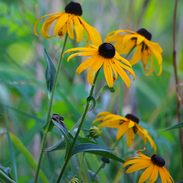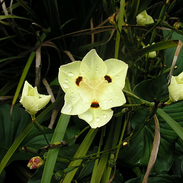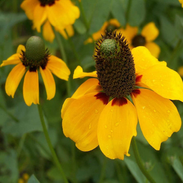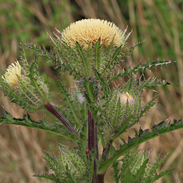The Blue Mistflower (Conoclinium coelestinum), with its fluffy clusters of lavender-blue blossoms, is a familiar sight in meadows and gardens across eastern North America. But this lovely wildflower is more than just a pretty face. It also holds a rich history of medicinal use, particularly among Native American tribes, who recognized its potential to heal and soothe.
Traditional Uses:
Respiratory Ailments: Blue Mistflower has been traditionally used to treat a variety of respiratory issues, including coughs, colds, sore throats, bronchitis, and even asthma. This is likely due to its expectorant properties, helping to clear mucus from the airways.
Fever Reducer: The plant was also used to reduce fevers, suggesting potential antipyretic properties.
Wound Healer: Some tribes used Blue Mistflower topically to promote the healing of wounds and skin infections, possibly due to astringent and antimicrobial effects.
Women's Health: Traditionally, Blue Mistflower was used to address menstrual cramps and other gynecological issues.
Potential Properties & Modern Research:
While scientific research on Blue Mistflower is still somewhat limited, some studies support its traditional uses:
Antioxidant Activity: Blue Mistflower contains antioxidants, which can help protect cells from damage caused by free radicals, contributing to overall health and disease prevention.
Anti-inflammatory Effects: Some studies suggest that the plant may possess anti-inflammatory properties, which could explain its traditional use for respiratory problems, fever reduction, and wound healing.
Antimicrobial Potential: While not extensively studied, it's possible that Blue Mistflower has antimicrobial activity, supporting its use for skin infections and other ailments.
Cautions and Considerations:
Allergies: As with any plant, some individuals may be allergic to Blue Mistflower.
Pregnancy and Breastfeeding: Pregnant and breastfeeding women should avoid using Blue Mistflower due to a lack of safety data.
Drug Interactions: There is limited information on potential drug interactions, so consult with a healthcare professional if you are taking any medications.
Sustainable Harvesting: If you plan to wildcraft Blue Mistflower, ensure you do so sustainably and with respect for the environment.
The Future of Blue Mistflower:
As interest in natural remedies continues to grow, Blue Mistflower warrants further scientific investigation. Its traditional uses and preliminary research suggest it could be a valuable source of natural remedies for various health concerns.
Disclaimer: This blog post is for informational purposes only and should not be considered medical advice. Always consult with a qualified healthcare professional before using any herbal remedies.













